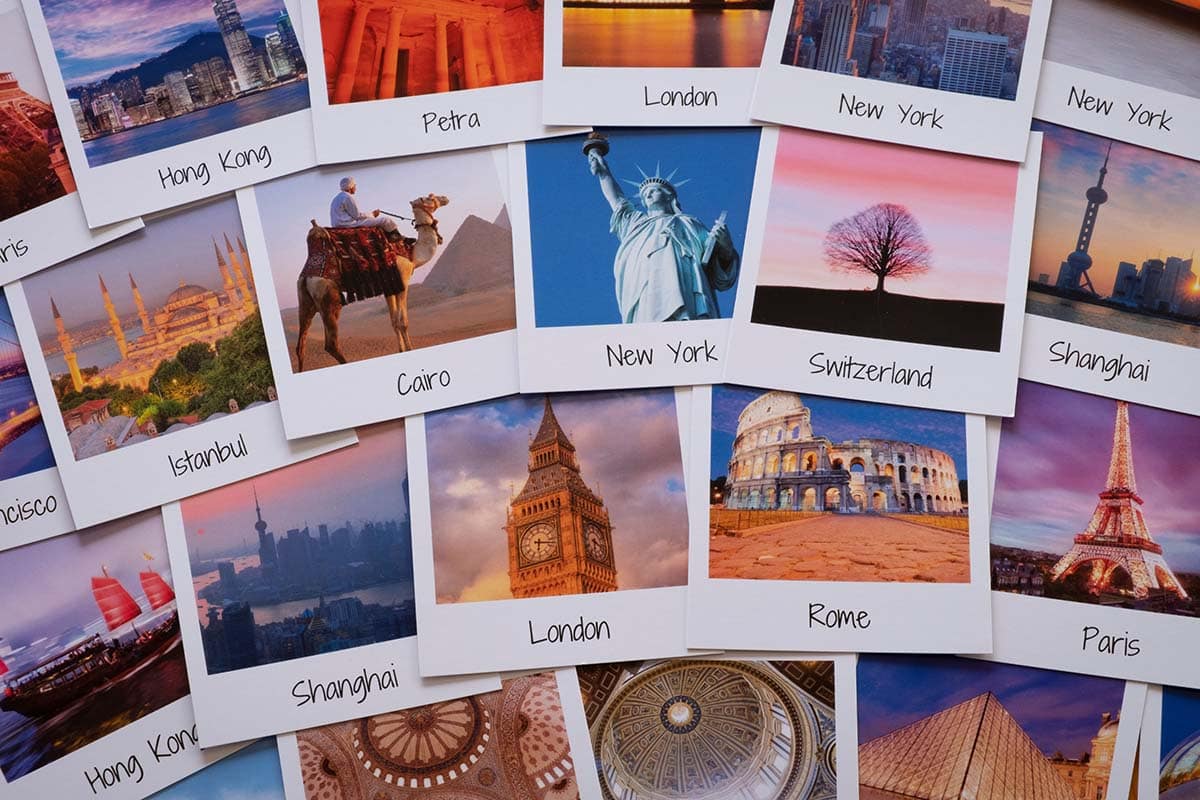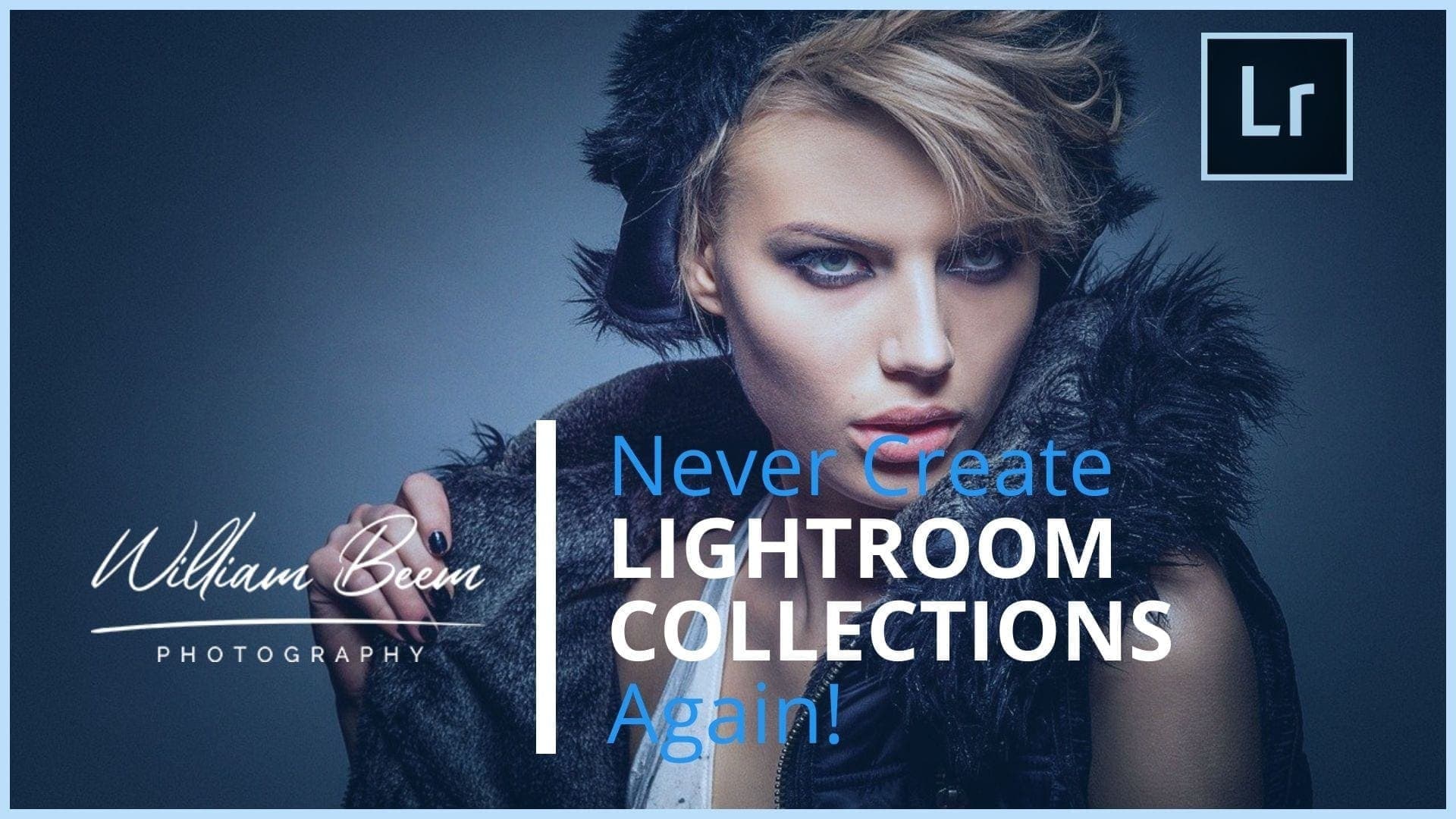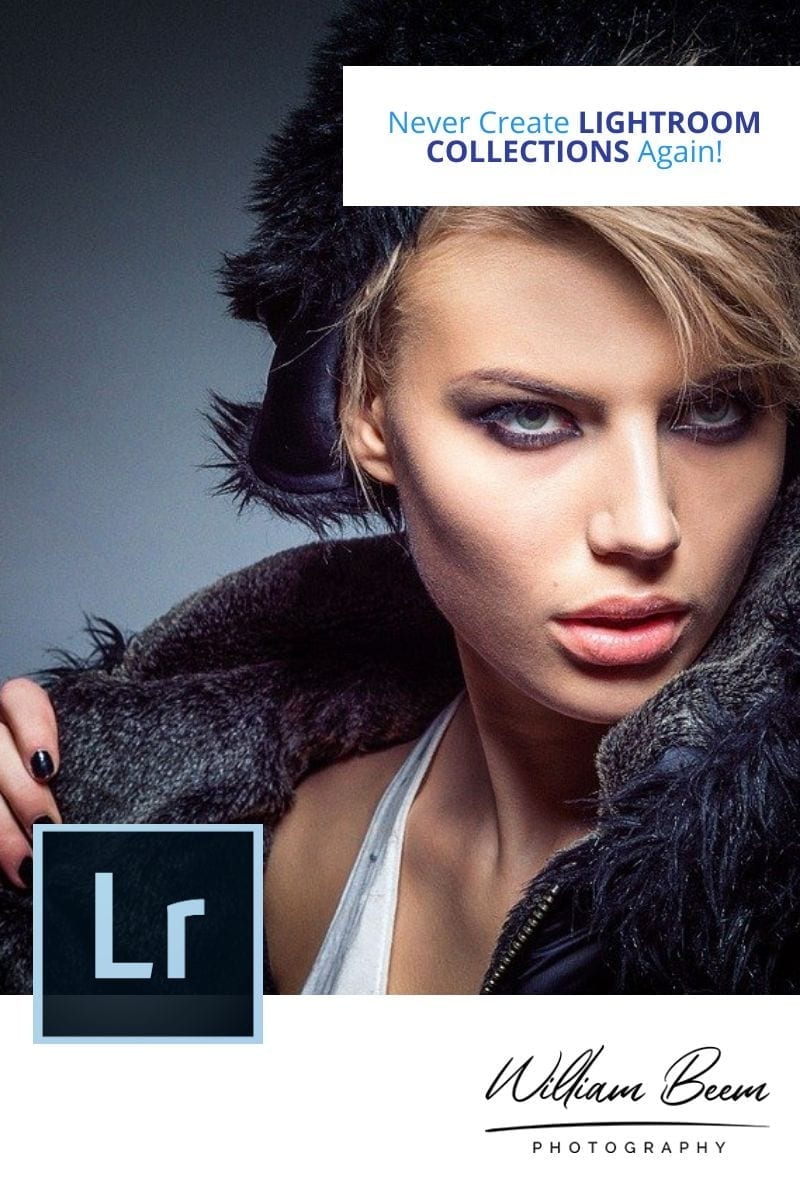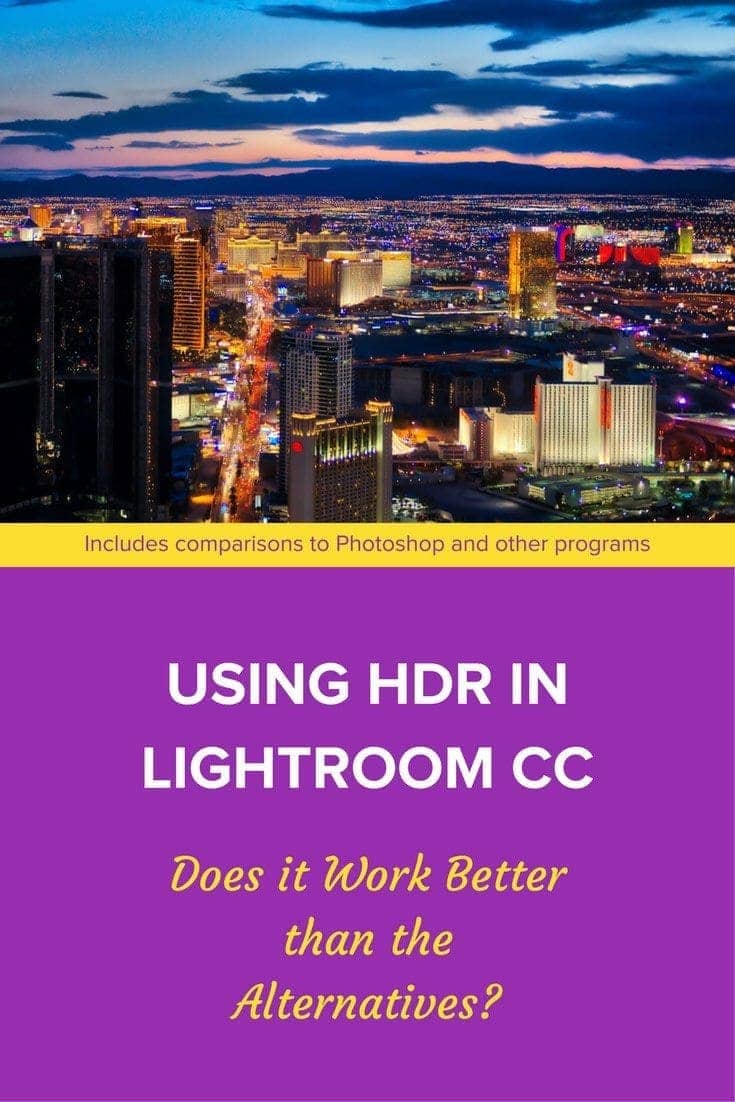Affiliate Disclosure: We earn a commission if you purchase through one of our links at no additional cost to you.
I will never create Lightroom CC Collections again, and I don’t think you should, either. For years, we’ve been misled into thinking that collections were the best way to organize our photos. You ought to know that advice is completely wrong. I can show you a better way.
Why Do We Need Lightroom CC Collections?

Note
Adobe’s penchant for changing the names of its Lightroom products causes some confusion. This article refers to what is now Lightroom Classic CC.
If you REALLY want to know how to organize your photos in Lightroom Classic, check out my course, Where’s My Photo. Inside the course, we’ll go over many tools that Lightroom offers to add and organize your metadata so you can get organized, find and share your photos.
When you first started using Lightroom, you had to import your photos into folders. That’s easy to understand. Whether you are a Mac or Windows person, you have folders. That’s the organization system that both operating systems use.
It’s not a great organizational system, though. Folders are just a place for your stuff. You start off with one folder called Pictures or something like that.
Then you need to import more photos. There’s something different about the photos that follow. They aren’t the same as your previous photos, so the folder you originally created doesn’t make sense for those photos.
These photos are different. They need a new folder! Yes, that’s the ticket. Every time you import something different, you need a new folder.
Folders aren’t just a place for your stuff. They’re a label for your stuff. This stuff is different than that stuff, so I need a way to tell this stuff from that stuff.
After a while, you look at all the folders you created and think, “Boy, I have a lot of stuff. I wish there was a better way to find the stuff that I want now.”
Is Lightroom the Better Way?
Lightroom is supposed to be the better way, but it has a flaw.
It has Collections. When you think about it, Collections are just like folders. They look like folders and act like folders. You get a name on the front and your stuff goes in that collection.
When you get many collections, you can put them inside a Collection Set. That’s right; Adobe Lightroom CC gives us boxes to fill with Collections. Not just any Collections, but Collections that are somehow like the other Collections, yet different enough to still have their own Collection of photos.
Doesn’t this sound just like folders and sub-folders in your operating system directory? Well, that’s because it’s really the same thing from an organizational perspective.
It’s just as lame and messy, and it doesn’t scale well when you have tens or hundreds of thousands of photos.
Instead of a new organizational system, Collections are really just another mess that cannot truly handle growth.
That’s why some people use different Catalogs in Lightroom – to add yet another layer of obfuscation to the layered mess of Collections.
Let’s be honest. There are few reasons why you truly need to use Lightroom CC Collections.
Other than that, you can save yourself a lot of time and energy by avoiding collections. There’s a better way to organize your photos.
Lightroom CC Collections Are Weak Compared To Keywords
If you’ve been told that keywords aren’t important, then you’re missing the most powerful organizational tool at your disposal in Lightroom CC.
Put simply, keywords are metadata that you can add to your photos to describe them. Metadata allows you to create powerful searches to find the photos you need.
Around this point, I expect skepticism. People tell me that they don’t have a problem finding their photos. They just look in the Collection of the shoot.
That’s fine if you’re thinking about a particular photoshoot. The problem is that the name of the Collection is really no different than having only one keyword assigned to each photo in the Collection.
Think about it. After you’ve created a ton of Collections, that’s a pretty long list that you’re skimming manually. You can type in the search box with a keyword and get just what you need.
At this point, keywords only have a slight speed advantage over Collections because we’re looking at a one to one relationship. The difference is that you search instead of review it manually.
The power comes when you combine keywords in your search.
Lightroom Collections Are One-Way Streets
Let’s say that I have a model who worked with me on multiple photoshoots. Some of the photoshoots were formal wear. Some were swimsuit. Some were lifestyle.
How do you create your collections? Do you make one for the model? One for each photoshoot? One for each style of clothing?
Please tell me how that is different than creating a keyword for the same photos. It isn’t, really.
Now tell me how you search through Collections to find your photos of a female model in her 20’s with brunette hair wearing formal wear and show with a beauty dish using a shallow aperture below f/2.8?
Of course, you wouldn’t do that at all. You’d use a keyword search combined with a metadata search. Why? Because the Library Module in Lightroom CC isn’t about art. It’s about organizing data so you can find it later.
So what purpose do your collections serve when you’re searching through a hundred thousand photos? None.
Lightroom CC Collections are absolutely useless for anything other than browsing.
Lightroom CC Organizational Concepts
I’ve written about tagging photos with keywords before. I even shared the hierarchical keyword list that I used in Aperture, and later imported into Lightroom.
My strategy today is a bit different, but some of the concepts remain. I still believe in using a keyword hierarchy. It used to have the following top-level keywords:
To be honest, there’s a lot in my old keyword list that I no longer find relevant. When you think about your photos, your subjects come down to three things.
You’re taking photos of someone, some place, or some thing.
If you have a subject that isn’t a person, place or thing, please let me know.
These days, I use a system that’s been around for thousands of years.
The Only Lightroom CC Collections You Need
Here’s how I manage my photos with only a few Lightroom CC Collections.
Import
Now you can import your photos directly to a Lightroom CC collection. You only need one, but you have to manage it. Doesn’t matter if you’re importing a card or tethering your camera to Lightroom, this is where you put your photos as they first enter Lightroom.
To be honest, you don’t even need this one if you are truly diligent. Lightroom CC has a temporary collection called Previous Import. If you’re good, you will tag your photos with a unique name for the session and any other tags that you need right there.
Let’s face it, most of us aren’t perfect. We get distracted. Maybe we lose a connection while tethering and Lightroom wipes out the Previous Import collection and starts fresh with the next sessions. Stuff happens.
The Import collection gives you a place to put your photos as they enter Lightroom, and they stay there until you tag them with keywords so you can find them later. Once you’ve added keywords, remove the photos from the Import Collection.
Import is a temporary workspace collection, not a final resting place for your photos.
Target
Target Collections are useful for sharing your photos with a client. As you import your photos during a tethering session, you can press the letter B on an image to add it to a Target Collection, which can share it to a web page or Lightroom Mobile.
Just like the Import Collection, it’s a temporary workspace. You can only have one, so why would you ever want more than one? Just create a Collection called Target and you’ll never have to wonder which Collection is the Target Collection again.
As before, clean it out when you’re done using it for a session.
Mobile
This one is a bit different than the others. Create a Collection Set called Mobile. Inside, create the Collections that you want to sync with Lightroom Mobile. Add them and remove them as needed. Your top level view of Collections will never get unwieldy with synced Collections.
Organization Is A Journey, Not A Destination
You can be organized as long as you never do anything else. It’s always possible to clean up a mess. The problem is that life always gives us new material. Suddenly, you aren’t organized anymore until you deal with the new stuff.
That’s why organization is a process. You must have the flexibility to grow without overwhelming yourself with tons of stuff.
Using Lightroom CC Collections may seem like an easy way to get organized at first, but it’s just a recipe for an episode of Hoarders. As your Catalog of photos continues to grow, you’ll find that Collections take up space and add absolutely no value that can’t be duplicated with a keyword.
Think about it. What name can you give a Collection that couldn’t be used as a Keyword? It’s just a label. Why not use the system that helps you manage your labels for your photos while staying out of the way. and gives you an extremely flexible and powerful way to search for your photos?
What kind of Collections do you have today?
Every single one can be a keyword.
Lightroom Keywords Offer Greater Flexibility for Search
What is you already have a mound of Collections? Then you have a head start. Select all of those photos in that collection and give them a Keyword with your Collection name.
Do a quick search. Do you find all of the photos that were in your Collection? Of course you do. So why do you need that collection? You can call up those photos anytime you want with that one keyword.
Create a Smart Collection using that keyword and review the photos. Add more keywords. Some keywords may be appropriate for all photos. Other only apply to a few photos.
Go through a few Collections and do the same thing. Now it’s time to reap the rewards of your effort. Try a few searches.
Look for Vacation photos. Remember, you can search for what a photo is, as well as what it isn’t. You can make a query that basically says, Show me all my vacation photos, except for those taken in France.”
Once you start working with the operators in the search interface, you’ll laugh at the Collection. It’s a bore. Apart from a few cases I mentioned earlier, you really don’t need a Collection to organize your Lightroom CC photos.
Keep something in mind. There are a lot of smart people at Adobe. Someone there was smart enough to add keywords and a strong search feature.
You may know a lot of smart people who work at other places, too. Here’s something those businesses have in common with Adobe. The smart people aren’t always the ones who make the decisions.
I know some of you are convinced that Collections are the only way to organize your photos. That’s what you’ve been told. They say that’s the way Adobe wants you to organize your photos, but are Collections truly the best way to organize your photos in Lightroom CC?
Try being different. Try doing something that gives you the best results. Never create Lightroom CC Collections again.
It’s kind of run to rebel against the Empire.
UPDATE: Tell Adobe to Add Keywords to Lightroom Mobile!
I’m adding this update to Lightroom Mobile. I’m pleased with the interface change and the addition of an Adjustment Brush for selective edits. However, there is one glaring omission.
Lightroom Mobile still does not support keywords!
I’m not the only one who wants this feature. There is an Adobe Feedback Page Requesting Keywords in Lightroom Mobile and it’s been there for three years. Three long, bloody years!
Whatever happened to the Adobe mentality of “Just Do It?” Three years since this page started. Six pages of additional votes for this feature. Adobe refers people to this page to add their voice to the request whenever the topic comes up, and then ignores those voices in one convenient dump.
We haven’t heard any response from Adobe about the status of this request. Adobe says nothing about when or if we’ll ever see keywords in Lightroom Mobile. In the meantime, those of us who prefer keywords to collections have a gaping hole in our photo organization strategy, thanks to the company that’s supposed to provide industry-standard software for organizing photos.
It’s time for Adobe to add a necessary element to Lightroom Mobile.
Add your voice. Maybe Adobe will finally heed us if enough people clarify that we need Keywords in Lightroom Mobile.
Want to learn more about Photography software? Click below to check out articles about Adobe, ON1, Skylum, and more.
Photography Software Articles









Well …
Smart Collections stored in a Collection Set is just a saved Keyword og Metadata Search … so why type in the search kriteria every time you need to find a photo? instead, you can only browse to that Collection Set and Find the Smart Collection of you choice … and you dont need to remember if you made a 4 or 5 star label on a picture, because you already have that kriteria in the Smart Collection … and you can with ease see how many pictures you have with a specific motive or modell … or from a specific Town or place … and you will know that 50 of the 600 was so good that you gave them a 5 stars rating … 2 of them was printed on A2 and 8 was sent to your client …
Everything already saved no need to do multiple search to find the right ones …
Best regards
Jaran
I 2nd that, Jaran, I too use Smart Collections as a quick search method. Especially when I don’t finish adding the keywords to all photos, they’ll be included in the Smart Collection once I do.
Thanks for the comment. The thing about using keywords is that you have to take some time to put them in place. However, I’ve found that it’s easy to put some general purpose keywords in during Import, and then I can add more keywords later when I want to add details.
Kudos to you, Mr. Beem! And hurrah for internet searches! Tonight I started a systematic effort to organize my images – I chose my starting folder and applied my chosen keywords to the matching images. Then I turned to the Collections, and even though I’d already set up my organization in the subject matter I shoot months ago and had hundreds of images already organized in collections, I immediately realized that the subject titles I was about to choose were the same ones I’d just used in Keywords.
So I Googled “Do I need to have collections and keywords in Lightroom?,” scanned down the list of titles, came across yours, William, and read exactly what I wanted to read – why waste time “re-doing” my keywords? You covered every argument and allowed me to dismiss this issue without hesitance. You helped save me many hours of precious time over the course of the coming years. Well written article!
Mike,
Thanks. I’m really happy that the article worked for you. I appreciate the feedback. If you run into someone else with the same concerns, please share this post with them.
Thanks, William; excellent, practical information. It is amazing the mistakes a novice user can make with organization in Lightroom. Though the quantity of my photos is barely over 10k, I recently spent several hours ‘finding’ photos I had moved and renamed outside of LR. I finally have no more of those ominous question marks, and I hope not to find myself in such a predicament again. About a year ago I started using key words as an organizational method. I’m still not good at it, but your hierarchy appears to be a tool I will find useful. Even hobbyist photographers, and I use that word with tremendous respect for those of you who are so much more, need efficiencies. Again, your guidance has been helpful as I traverse this path.
Jeanne,
Thanks for the comment. I’m surprised that more people aren’t teaching to benefits of keywords over collections. They’re much more flexible and easy to use for Smart Collections or quick searches.
Hi. Interesting article but I personally disagree with your standpoint. From my perspective, you misunderstand the purpose of collections as well as smart collections when you “sort of” state that it is a matter of using collections OR keywords. In my opinion, it not one or the other, but how you combine them. Your statement is in a sense the same as saying that you don’t need the rating, or for that matter pick/reject, just because you can create a keyword for that as well. All these features play an important role in the multi-layer filtering mechanisms that Lightroom provides. Just because you can describe anything with keywords doesn’t mean you’re supposed to.
Just to be clear – I am really a great fan of using keywords hierarchies and consider them as one of Lightroom’s most important features, but I would not even think about trying to replace collections with keywords. The example you present for collections (vacation, travel, landscape…) is of course not meaningful, nor is it in my opinion a correct argument for not using collections.
Not to say that my way of using it is “the right way”, but I prefer to think of it in the following way.
Collections – I put each photo session in a separate collection.
Smart collections – A predefined, possibly composite, query that will give me all pictures that match my query and that is dynamically kept updated.
Keywords – should only be used to describe what the picture represents and what I am supposed to find in the picture.
Rating – Well, of course the rating of the picture.
1. Every time I import photos, I start by putting them in a collection representing the photo session itself.
2. For each collection, I add keywords to the pictures that describes what to find in the picture.
3. Using the keywords, I view and pick/reject photos with the same content.
4. Using the keywords, I view and compare photos with the same content and apply ratings.
As a side note. Another argument for not using keywords for anything else than describing what to find in the picture is that when pictures are exported to for example stock photo libraries, they automatically index the keywords of the image. You typically wouldn’t expect session related information to be indexed in this case.
Hi Jimmy,
Thanks for the thoughtful reply. I appreciate the time and detail you shared.
You’re right that we disagree about Collections, but that’s OK. One of the reasons I wrote this article is because every tutorial I’ve ever found on Lightroom teaches the exact same thing. The problem is that it’s a very one-sided view of our to organize your photos. There is more than one way to stay organized in Lightroom, and this is the method I prefer.
It isn’t because I misunderstand how Collections and Keywords can work. It’s because I have a fundamental way of organizing information in different tools using metadata. Whether it’s Lightroom or Evernote, I find that Keywords (or tags) are a much more flexible and faster way for me to find the items I need.
Is there a right way of organizing photos in Lightroom? Sure there is. It’s the method that gives you the best result for the least amount of effort. This particular strategy is best for me, and I wanted to share it as an alternative to the rigid lessons from others who bang on the Collection mantra. Perhaps that works for them, but it’s good to have options and now how to use them.
I see you don’t monetize your site, don’t waste your traffic, you can earn extra bucks
every month because you’ve got high quality content. If you
want to know how to make extra money, search for: Mrdalekjd
methods for $$$
Thanks for this. I just watched a tutorial from Adobe advocating the use of folders and collections which seemed to me just another way for Lightroom CC to end up looking like my garage. Sure, it will look great for about a week, maybe a month, but then the chaos creep begins. Makes way more sense if I take a little extra time to add keywords to each image when I’m importing it. Then I can find it by using the strengths of a database instead of creating a tower of folders that will soon turn into a mess.
Hi, Paul
I’m sorry for the late reply. Must’ve missed seeing your comment when it came about.
As you can tell, I am not a fan of collections. I think your garage analogy is perfect. You’re going to end up with a lot of clutter using Collections, and then Collections of Collections.
I’m a fan of dynamic results. Using Keywords to tag my photos offers me much more flexibility to find what I want. When I use Collections, they’re temporary to work on a group of photos for a time. Then I delete them.
Good luck with your organization in Lightroom.
William,
I’ve been using iview media–> media pro (capture one), but they’re not going to support 64bit and thus I’ve been looking into Lightroom for catalog management; very confusing. Your article is the most intelligent, rational and most importantly practical article on the subject and specifically on this confusing topic of keywording vs collections; thanks 100%. Harry
I teach Lightroom and we share a very similar way of thinking about collections. I will add, I do use collections for projects. Say books, calendars, websites etc. They are useful as a temporary bag into which you can place your shortlists. Collection sets further make this task easier. When the project is done any additional organization I gained is converted to keywords. Keywords are for long terms storage, while collections are for projects. IMO.
Keywords can also be saved to the image metadata, another reason to like them. 🙂
I use keywords the way William has explained to organise all 80 thousand family and work photos taken over many decades. So much easier to find a pic from 50 years ago. Collections come last, which I call Albums, to be uploaded online for a hardcover phot album.